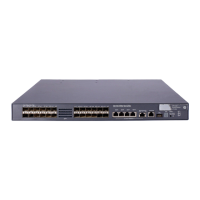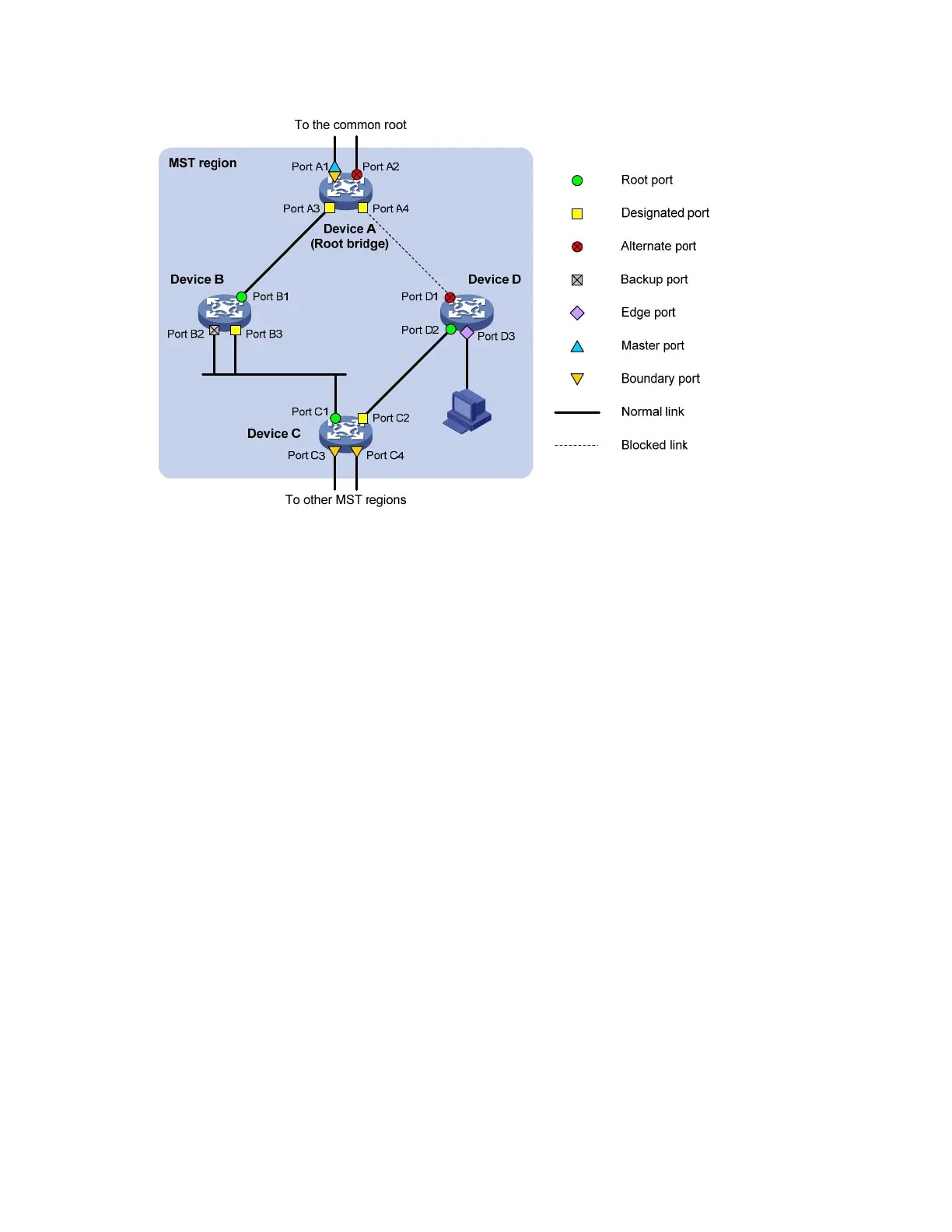68
Figure 22 Port roles
MSTP calculation involves these port roles:
• Root port: Forwards data for a non-root bridge to the root bridge. The root bridge does not have
any root port.
• Designated port: Forwards data to the downstream network segment or device.
• Alternate port: The backup port for a root port or master port. When the root port or master port is
blocked, the alternate port takes over.
• Backup port: The backup port of a designated port. When the designated port fails, the backup port
takes over. When a loop occurs because of the interconnection of two ports of the same MSTP
device, the device blocks either of the two ports, and the blocked port is the backup port.
• Edge port: An edge port does not connect to any network device or network segment, but directly
connects to a user host.
• Master port: A port on the shortest path from the local MST region to the common root bridge. The
master port is a root port on the IST or CIST and still a master port on the other MSTIs.
• Boundary port: Connects an MST region to another MST region or to an STP/RSTP-running device.
In MSTP calculation, a boundary port’s role on an MSTI is consistent with its role on the CIST. But
that is not true with master ports. A master port on MSTIs is a root port on the CIST.
Port states
In MSTP, a port may be in one of the following states:
• Forwarding: the port receives and sends BPDUs, learns MAC addresses, and forwards user traffic.
• Learning: the port receives and sends BPDUs, learns MAC addresses, but does not forward user
traffic. Learning is an intermediate port state.
• Discarding: the port receives and sends BPDUs, but does not learn MAC addresses or forwards user
traffic.
When in different MSTIs, a port can be in different states.

